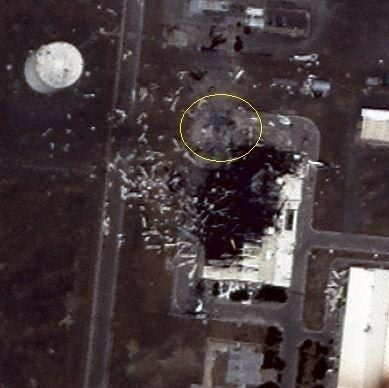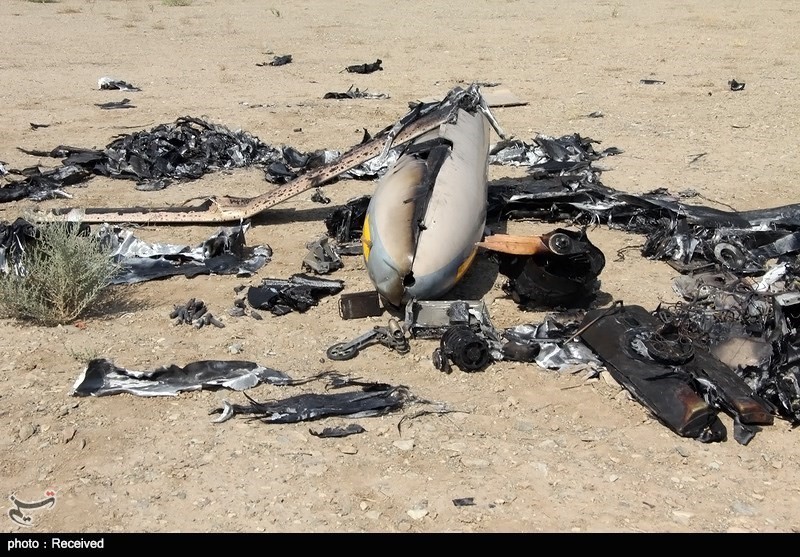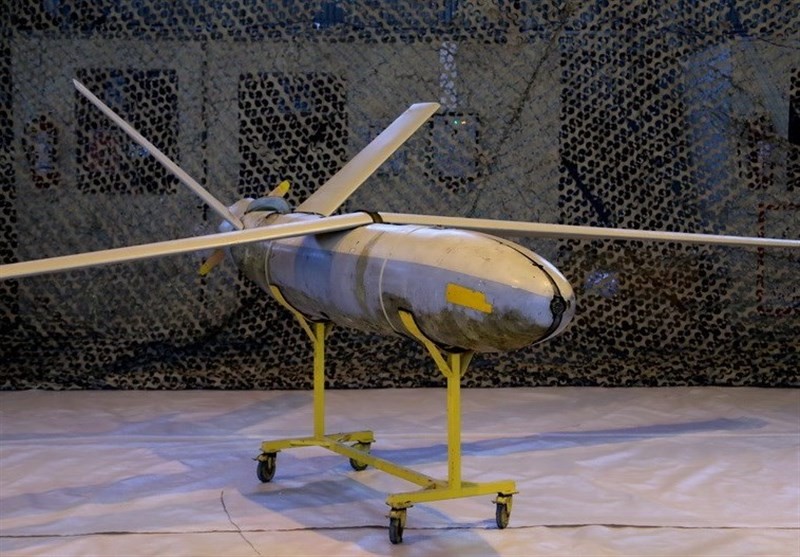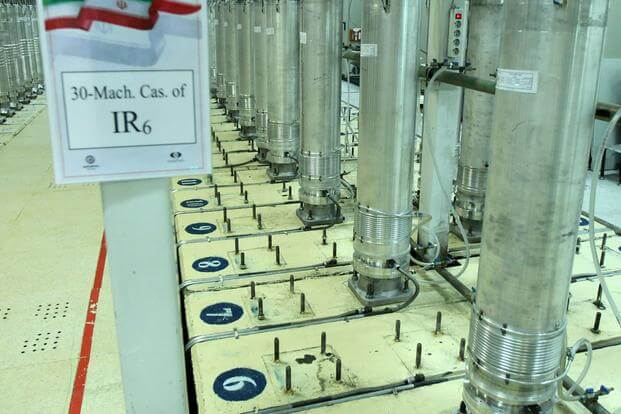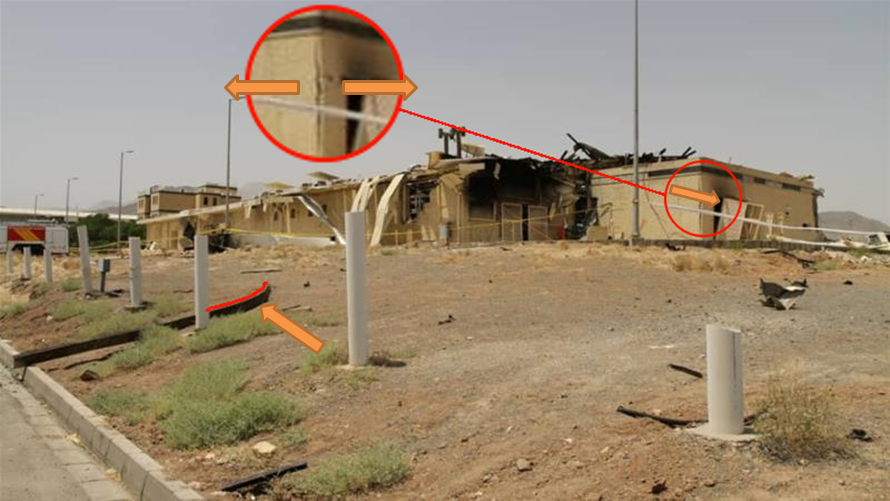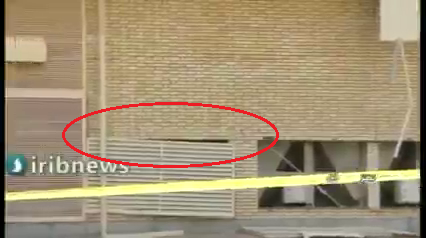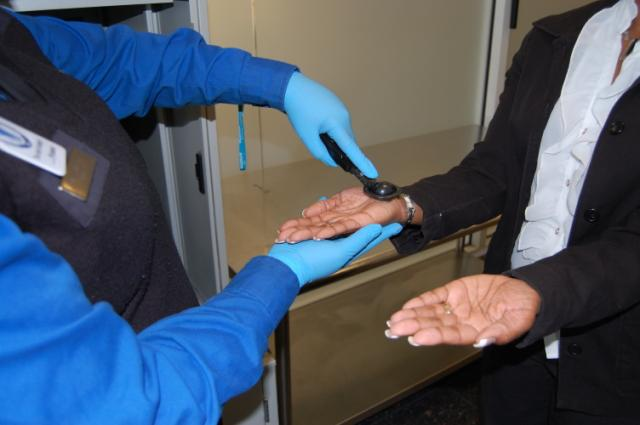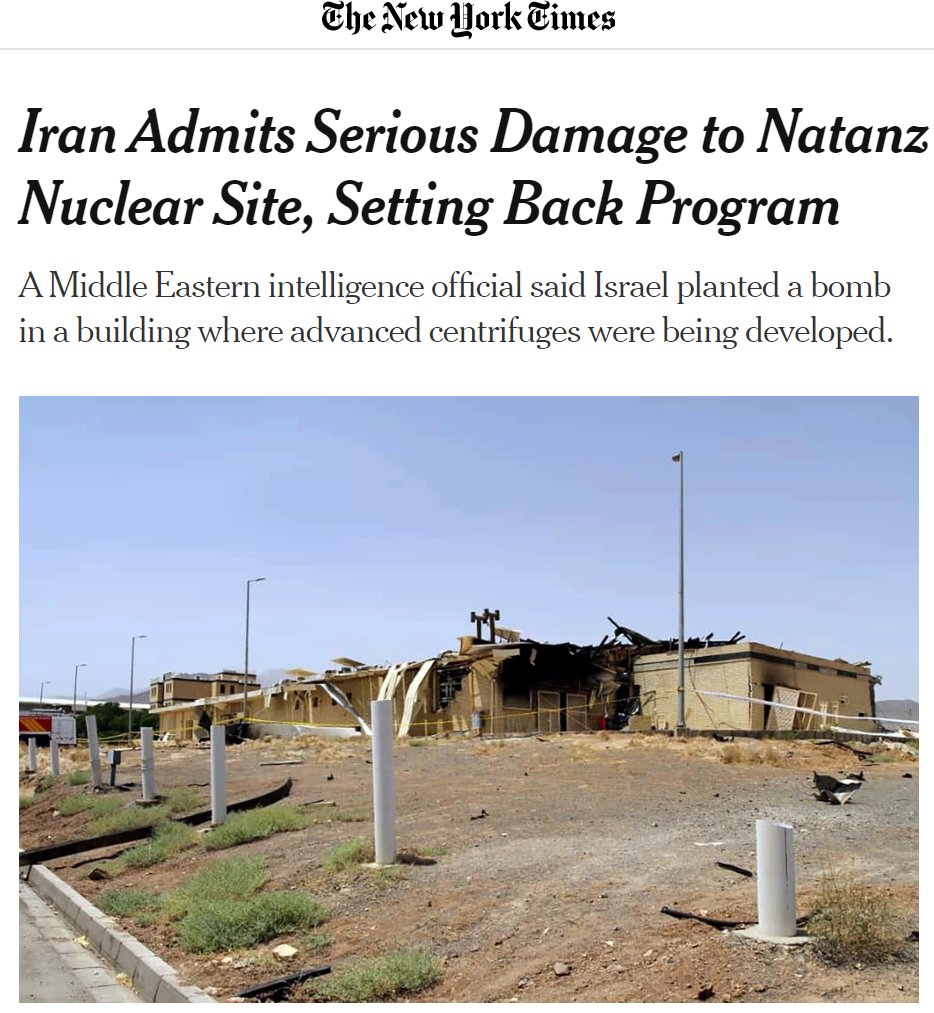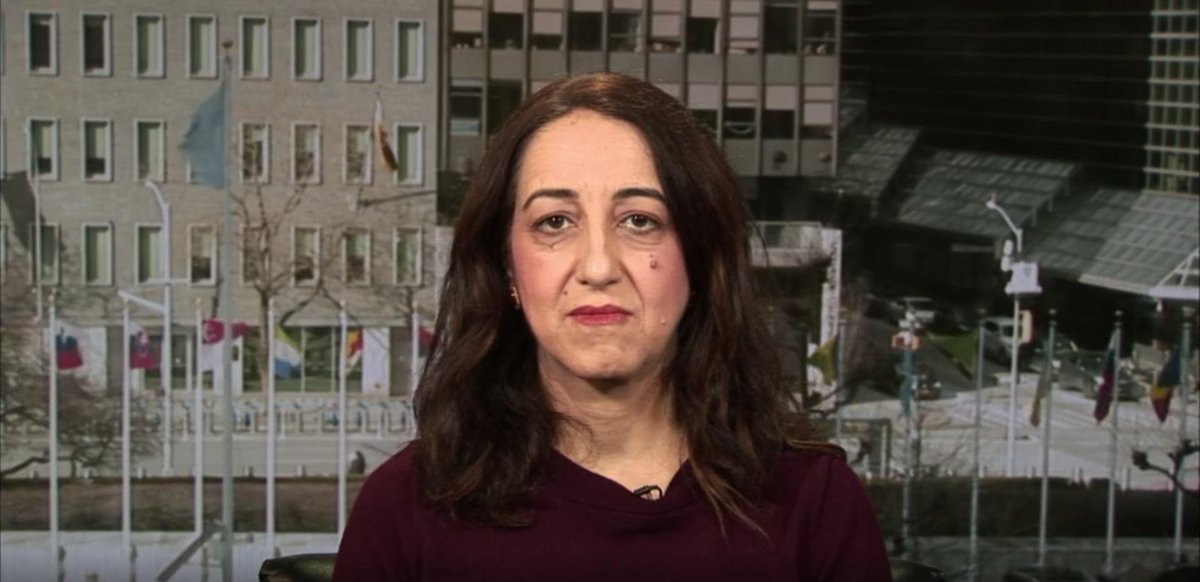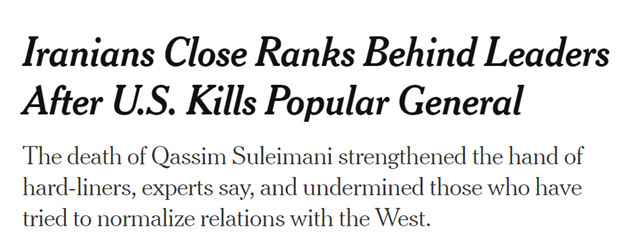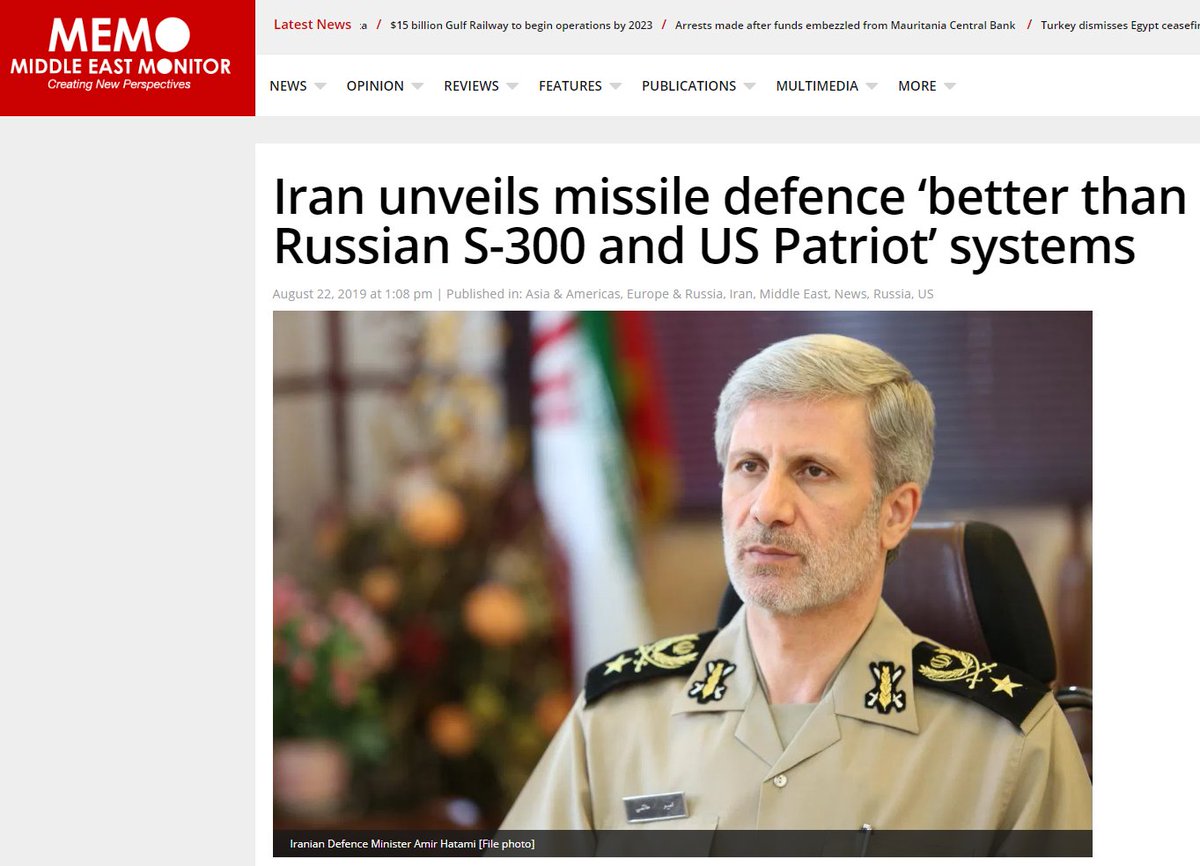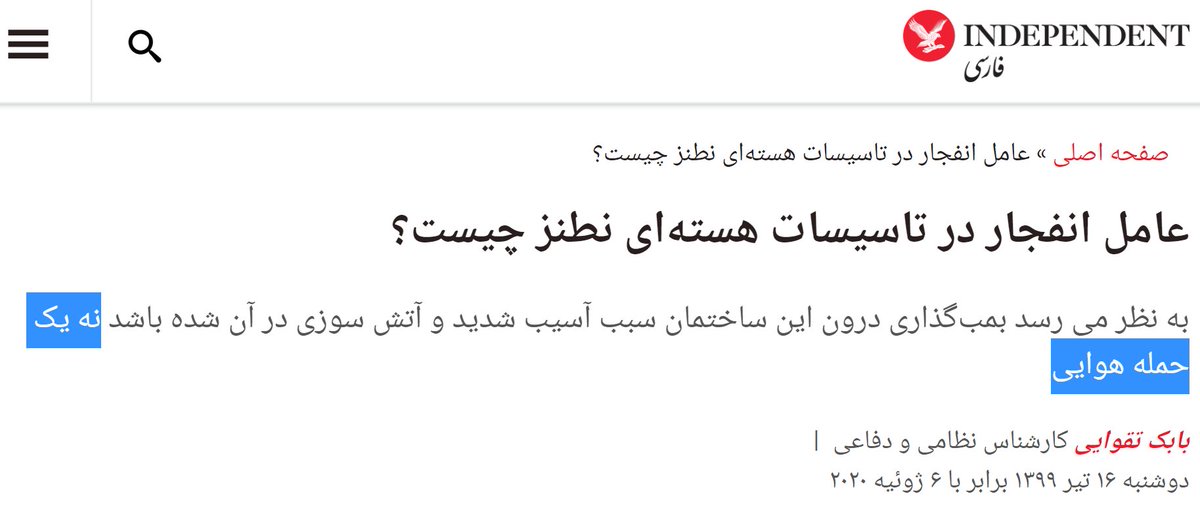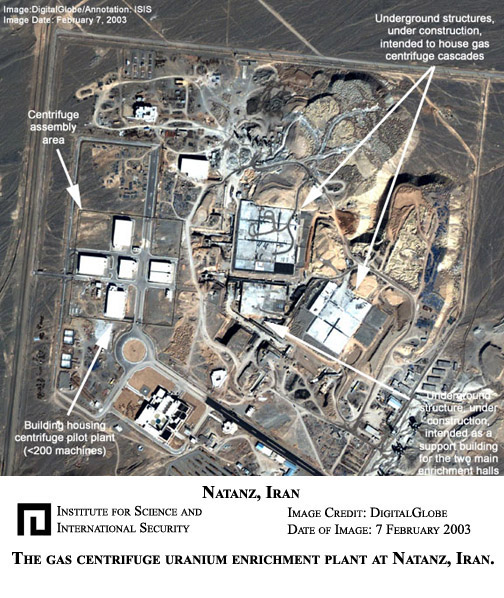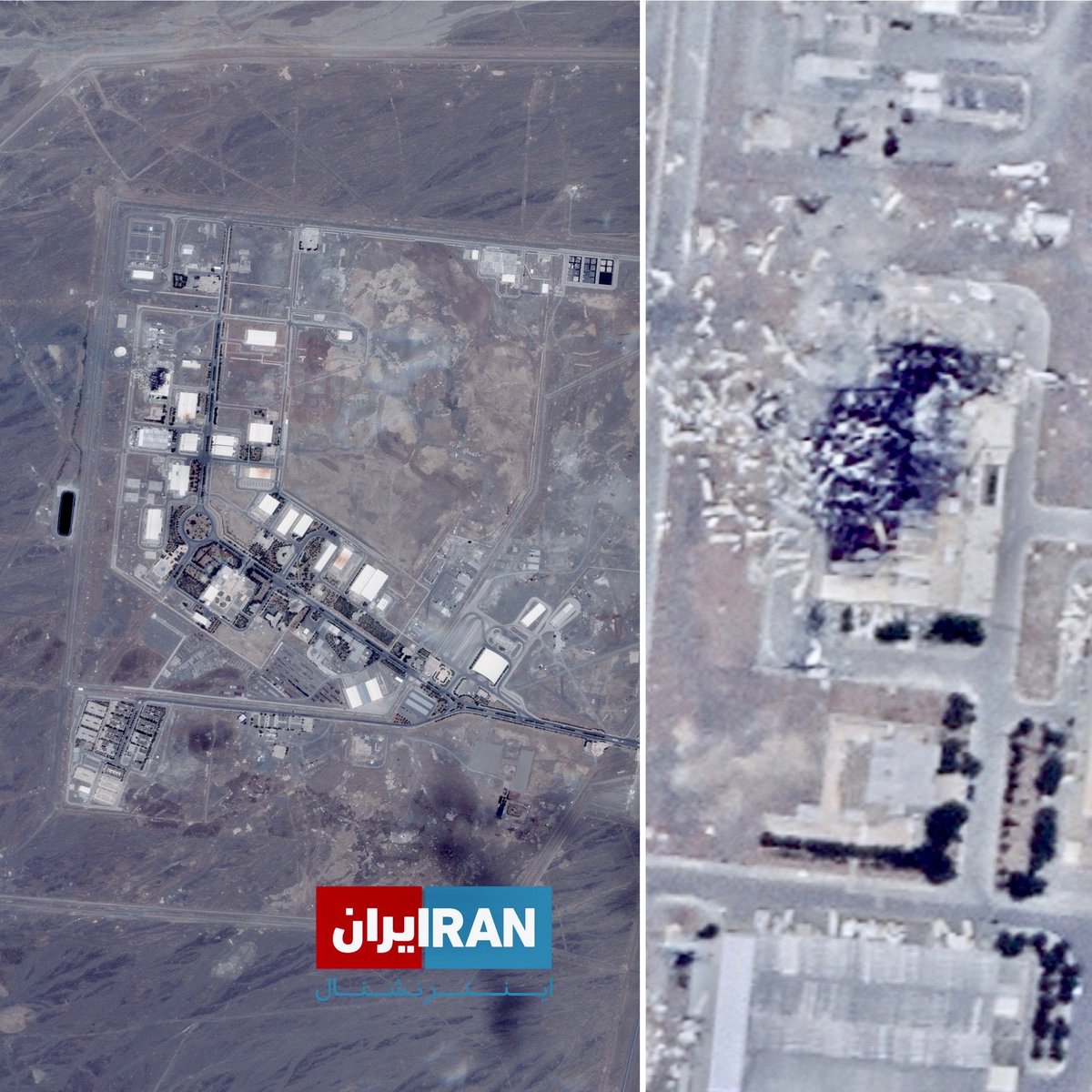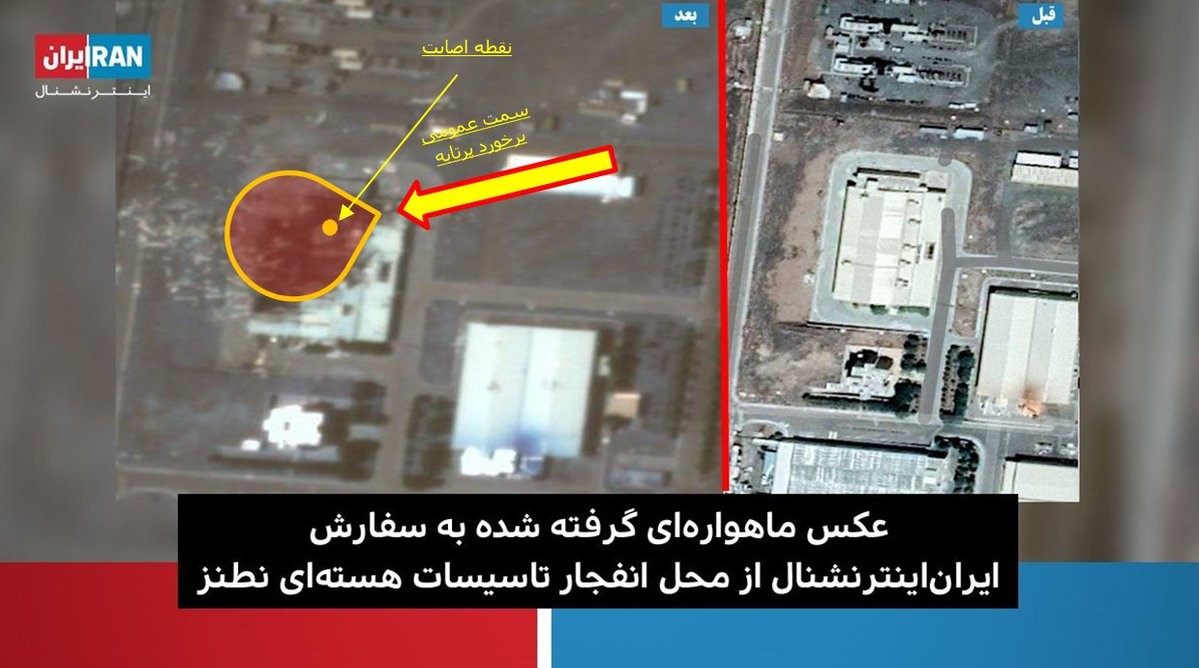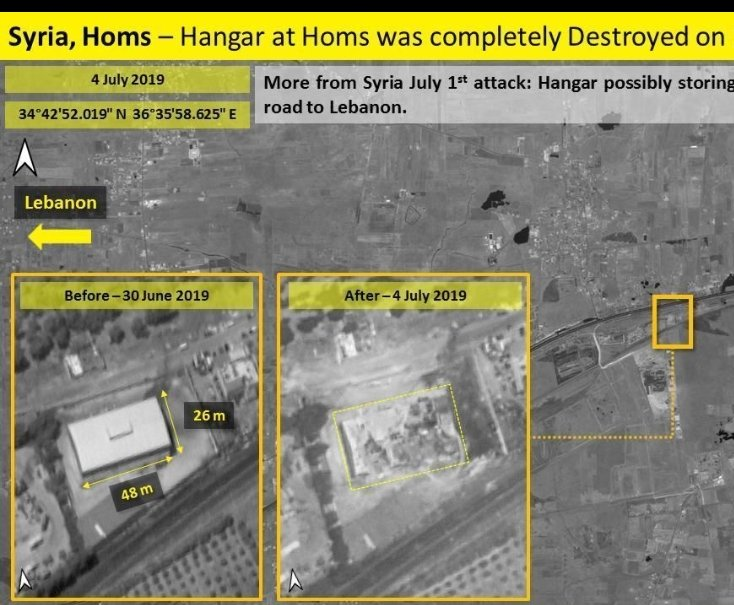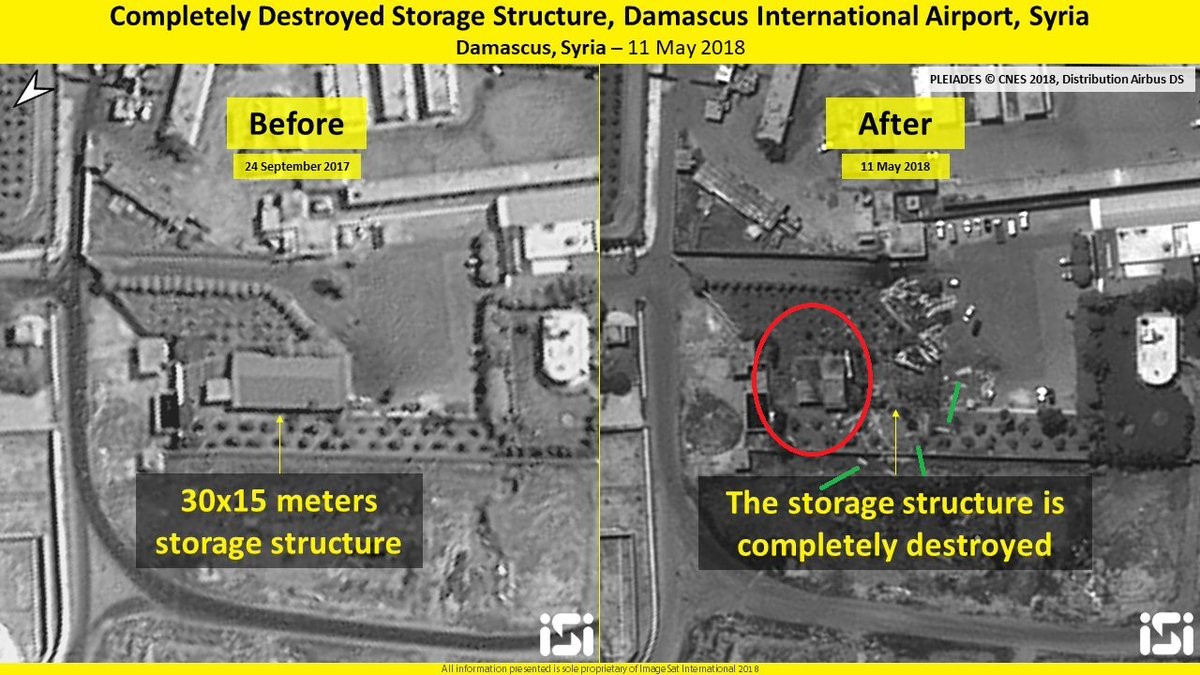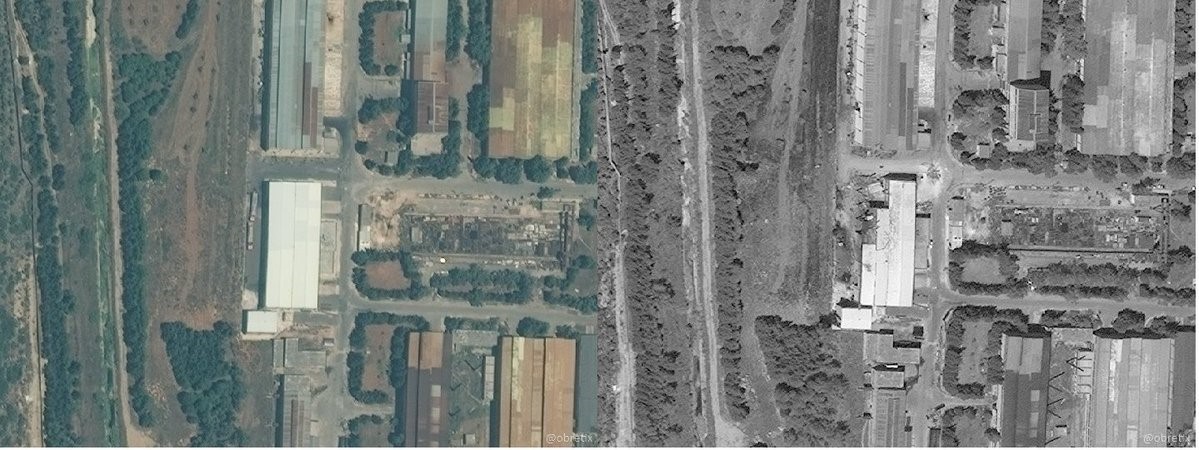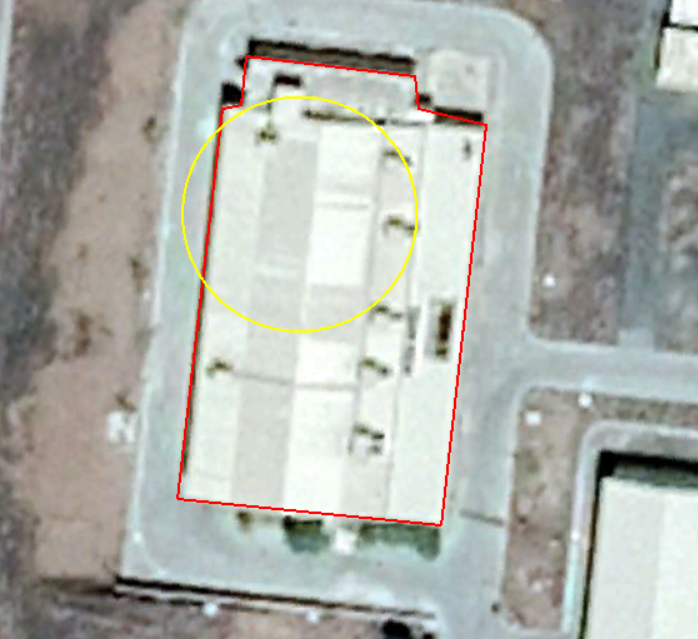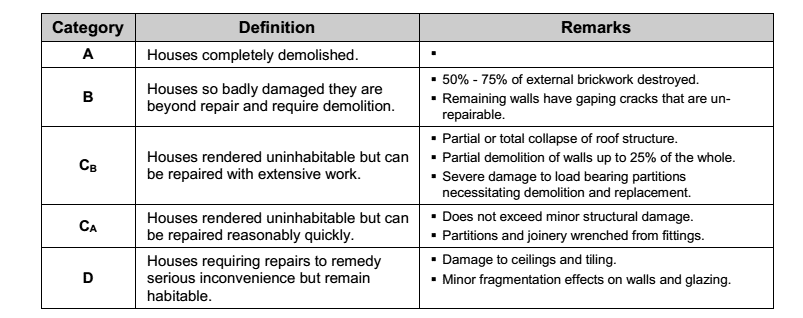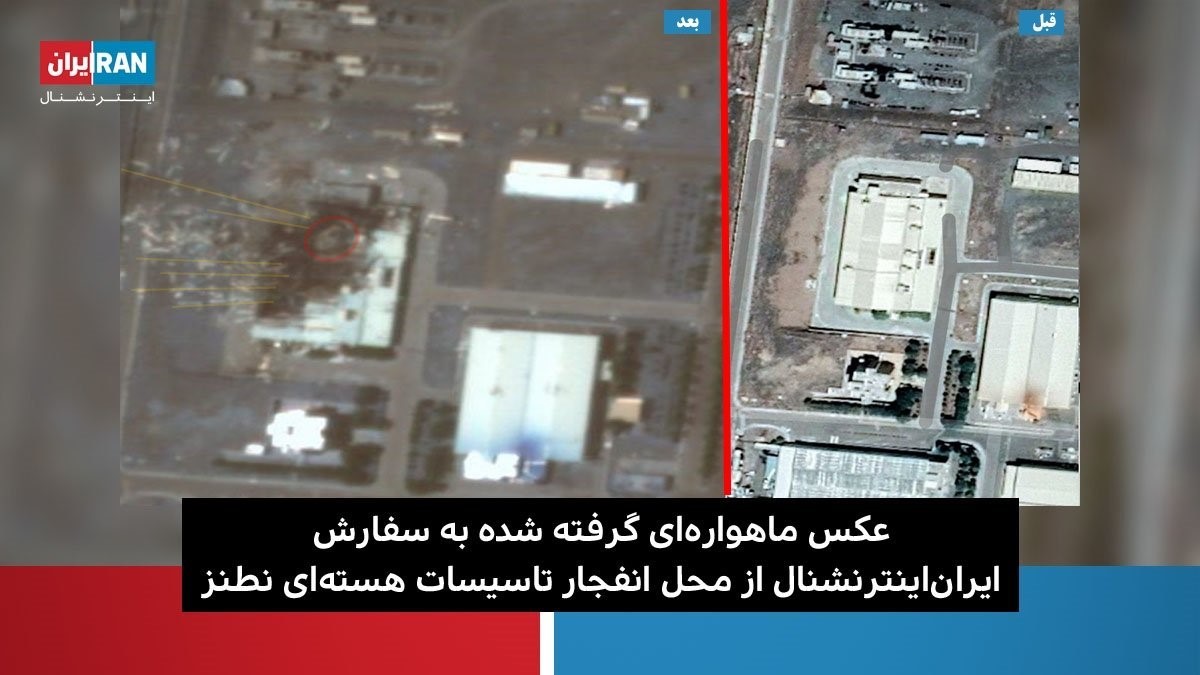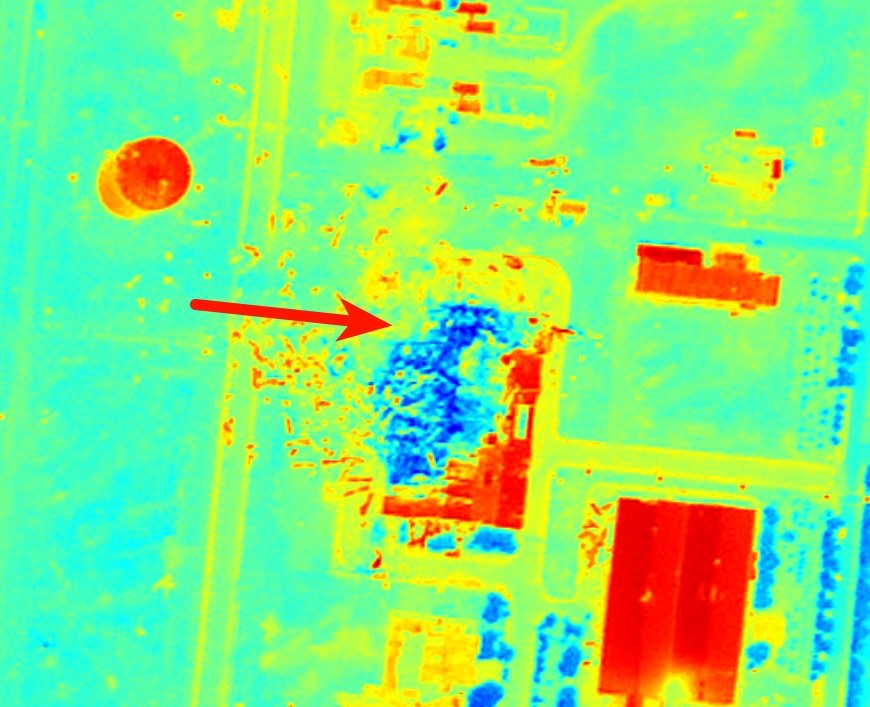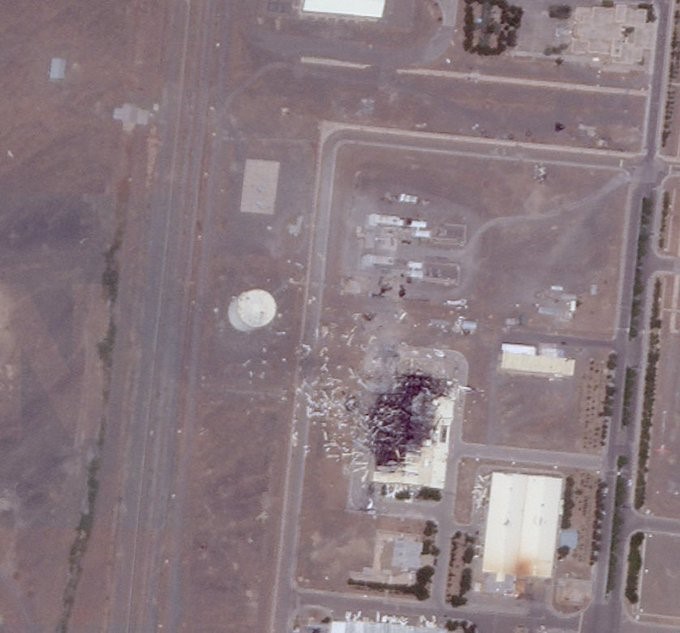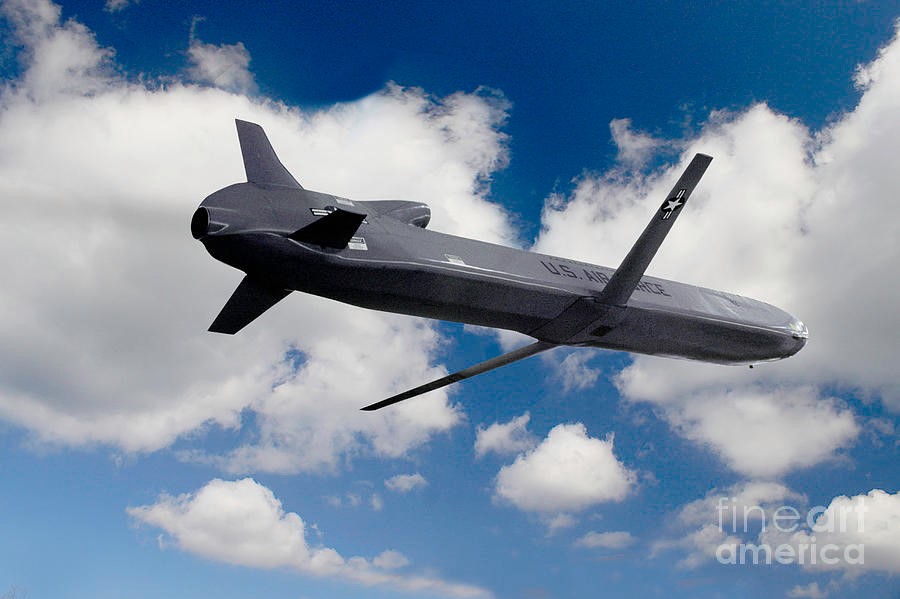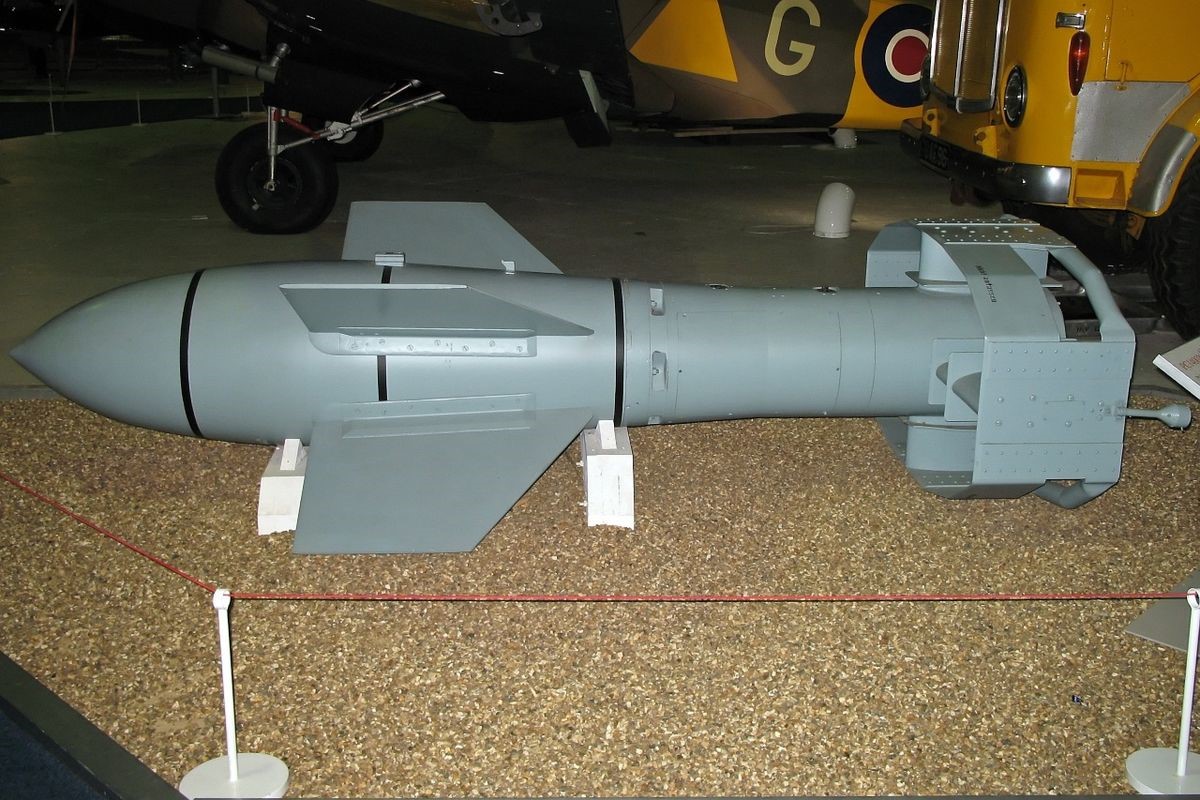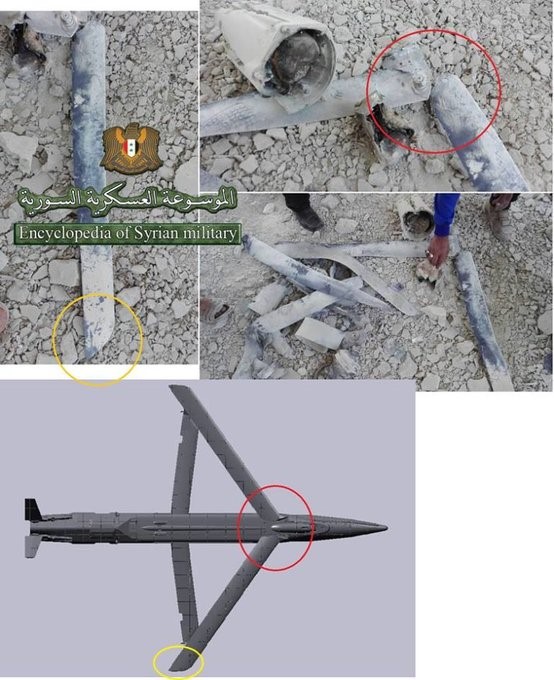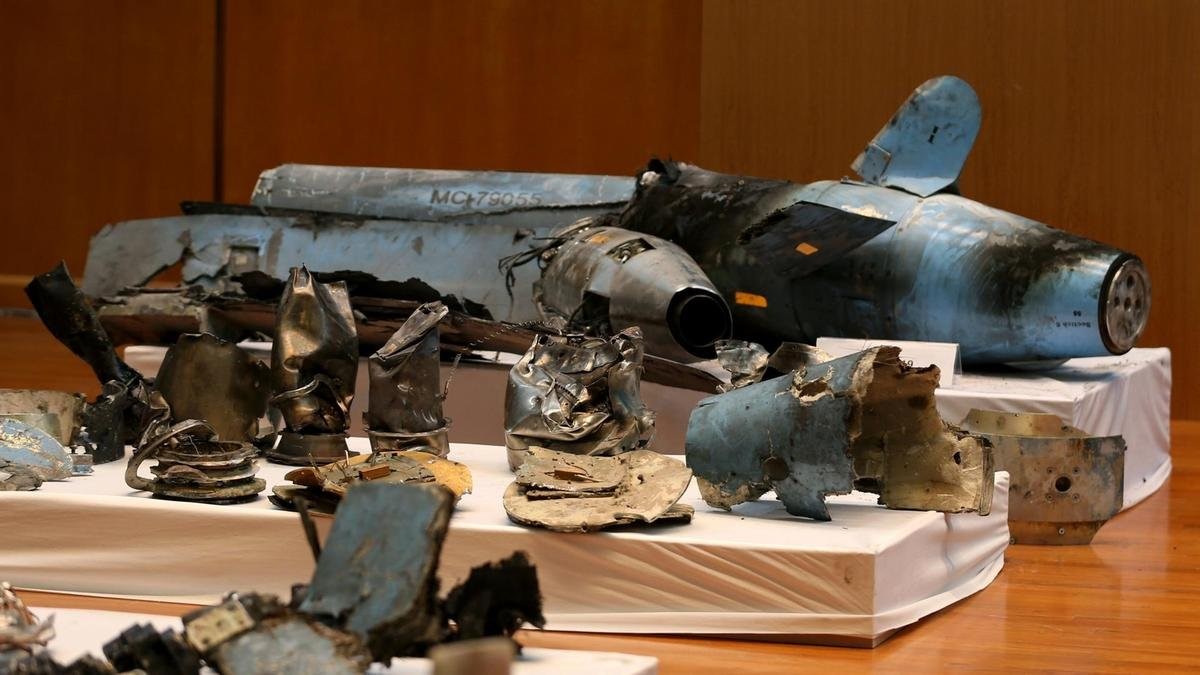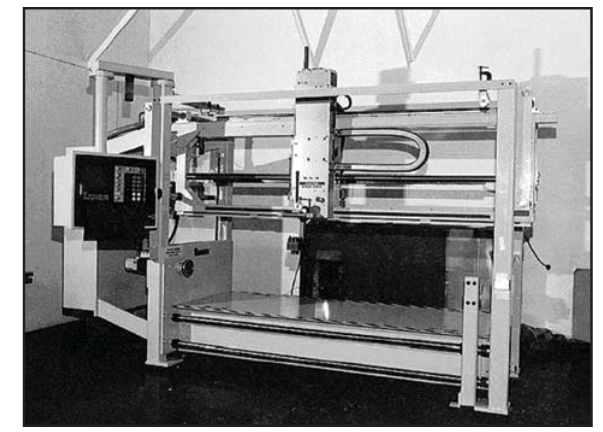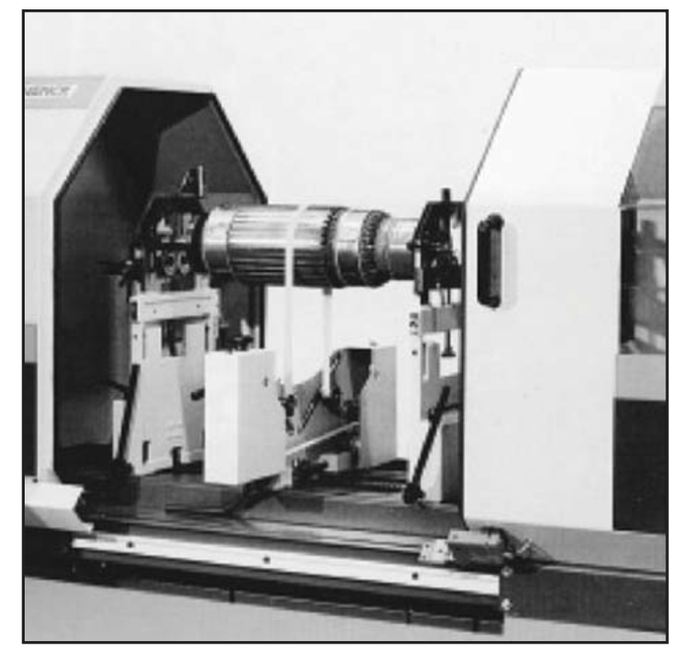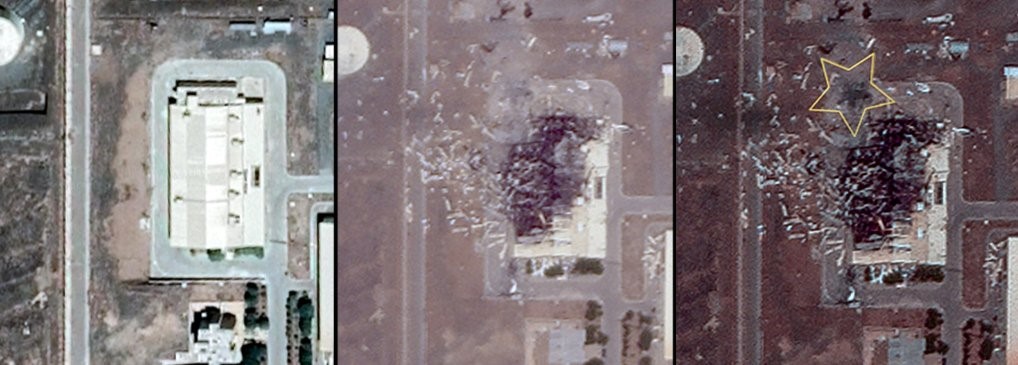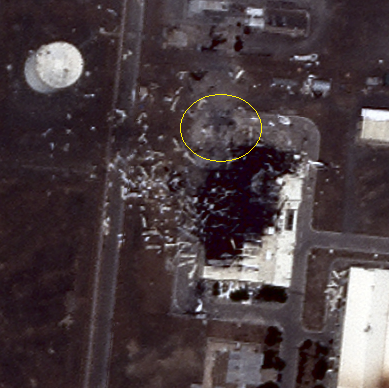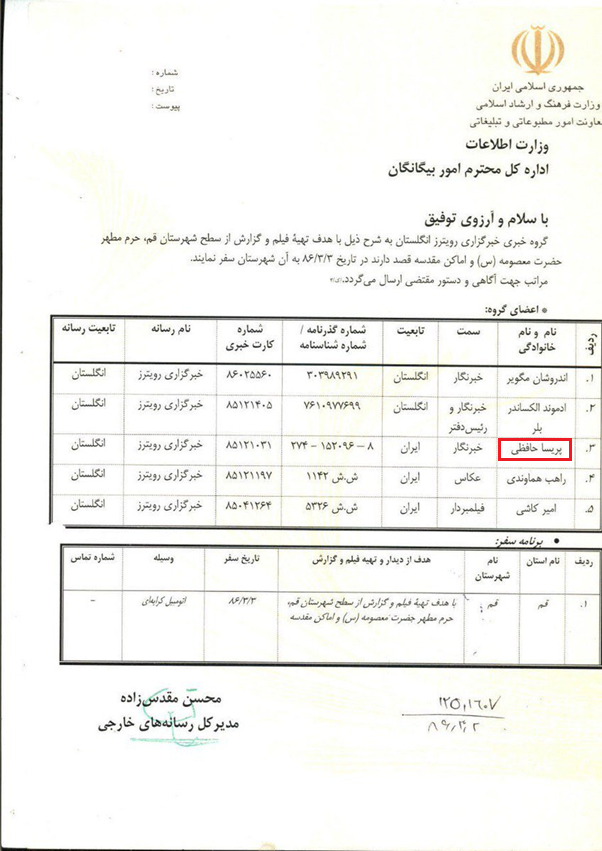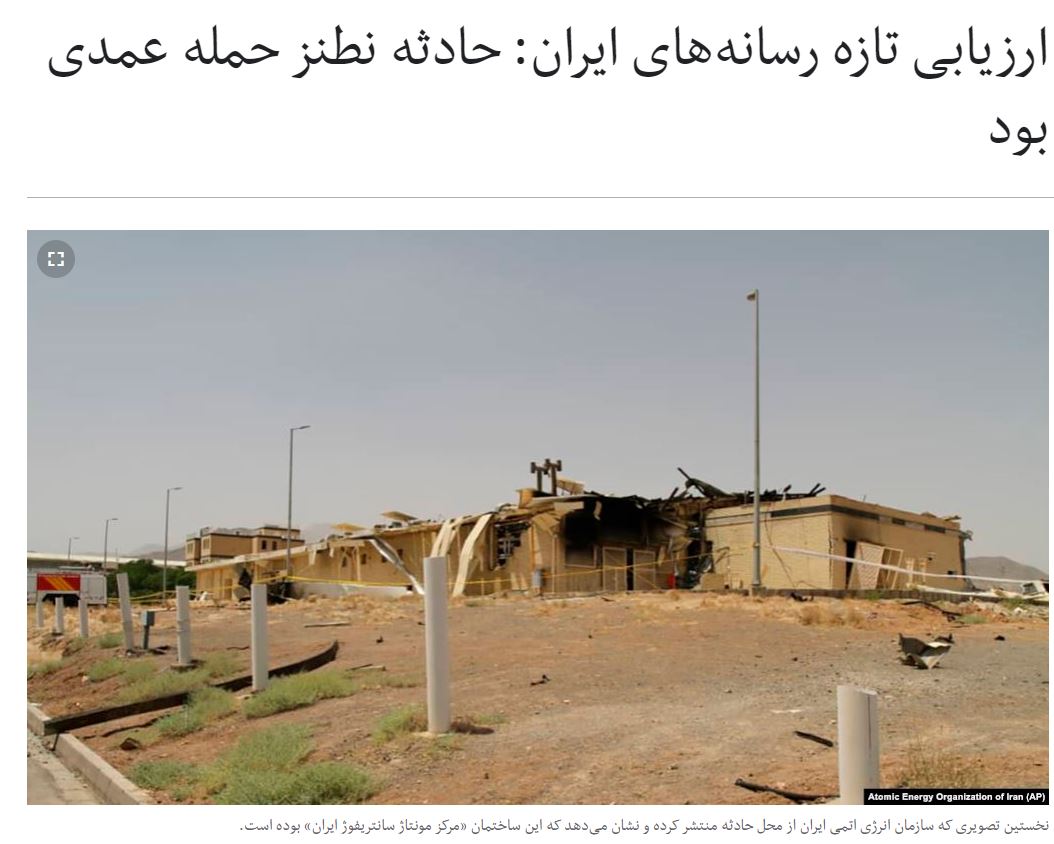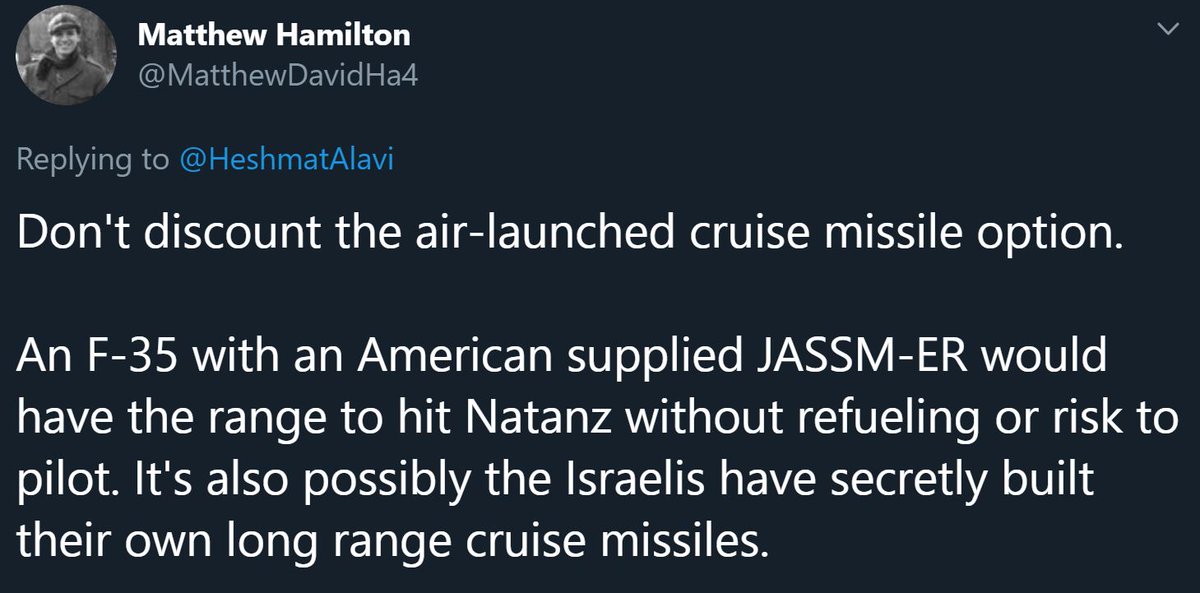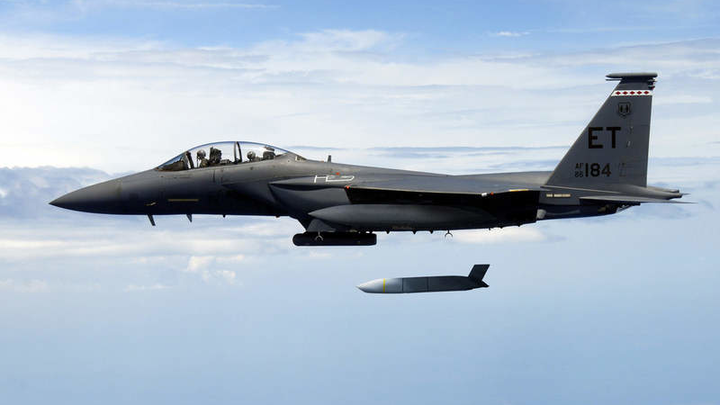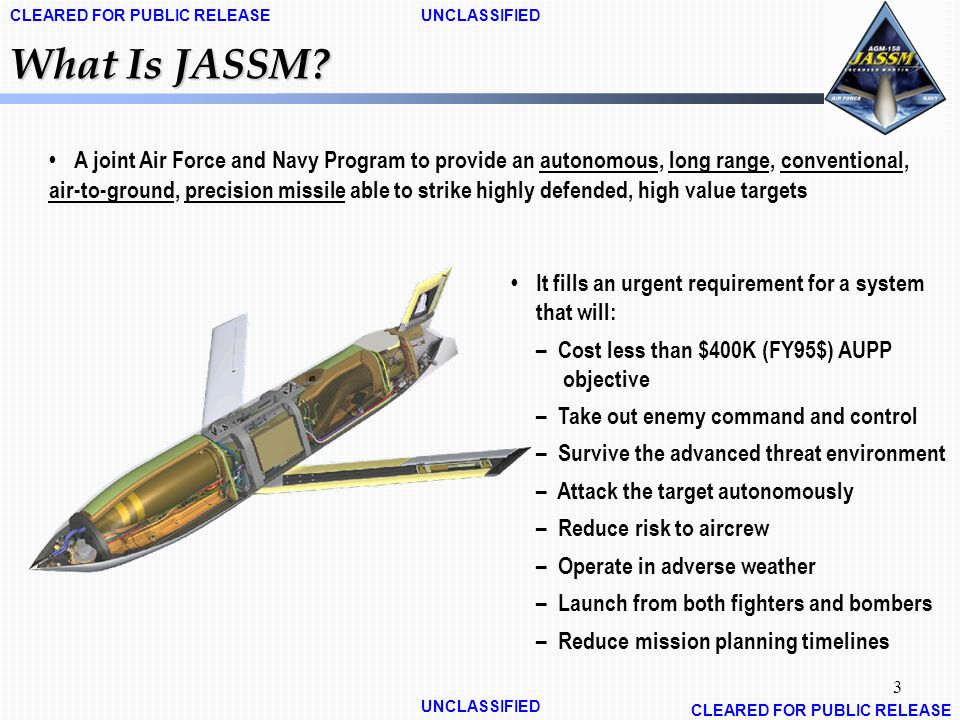THREAD
1)
Airstrike or bombing: What happened at Iran’s Natanz nuclear site?
The cause of the July 2 explosion targeting an advanced centrifuge assembly lab is a subject #Iran& #39;s regime seeks to maintain a lid on.
So let& #39;s dig in. https://medium.com/@heshmatalavi2/airstrike-or-bombing-what-happened-at-irans-natanz-nuclear-site-9bd5bdc76e83">https://medium.com/@heshmata...
1)
Airstrike or bombing: What happened at Iran’s Natanz nuclear site?
The cause of the July 2 explosion targeting an advanced centrifuge assembly lab is a subject #Iran& #39;s regime seeks to maintain a lid on.
So let& #39;s dig in. https://medium.com/@heshmatalavi2/airstrike-or-bombing-what-happened-at-irans-natanz-nuclear-site-9bd5bdc76e83">https://medium.com/@heshmata...
2)
There has been speculation and experts are weighing the possibility of an industrial incident, a cyber-attack, sabotage with explosives and even an airstrike.
There has been speculation and experts are weighing the possibility of an industrial incident, a cyber-attack, sabotage with explosives and even an airstrike.
3)
The possibility of an airstrike with manned aircraft, such as F-16s or F-35s, is next to none.
Other than the long range & refueling needs, the amount of damage caused is not worth it. Such an airstrike would only be allowed if it renders a long-term strategic setback.
The possibility of an airstrike with manned aircraft, such as F-16s or F-35s, is next to none.
Other than the long range & refueling needs, the amount of damage caused is not worth it. Such an airstrike would only be allowed if it renders a long-term strategic setback.
4)
While Iran is flatly denying any airstrikes, the possibility of using armed drones for such a surgical attack is not unlikely. On August 25, 2014, Iran’s semi-official Tasnim news agency reported that the IRGC shot down an Israeli Elbit Hermes 450 spy drone near Natanz.
While Iran is flatly denying any airstrikes, the possibility of using armed drones for such a surgical attack is not unlikely. On August 25, 2014, Iran’s semi-official Tasnim news agency reported that the IRGC shot down an Israeli Elbit Hermes 450 spy drone near Natanz.
5)
A normal industrial incident in Natanz is also unlikely. Due to various reasons, including massive investing & constant advice provided by int& #39;l experts, the site is probably one of Iran’s most advanced industrial complexes when it comes to HSE rules & regulations.
A normal industrial incident in Natanz is also unlikely. Due to various reasons, including massive investing & constant advice provided by int& #39;l experts, the site is probably one of Iran’s most advanced industrial complexes when it comes to HSE rules & regulations.
6)
The destroyed building that exploded was used for the mechanic assembly of centrifuges, meaning there were no special explosive material inside.
Furthermore, a night shift is unlikely in such a building.
Images indicate a pressure wave (explosion) inside the building.
The destroyed building that exploded was used for the mechanic assembly of centrifuges, meaning there were no special explosive material inside.
Furthermore, a night shift is unlikely in such a building.
Images indicate a pressure wave (explosion) inside the building.
7)
Possibility of sabotage & entrance into the site (special forces) is near to none. Possibility of secretly transferring explosives into the site is doubtable due to security measures tighter than airports. Everyone is tested for traces of explosives before entrance.
Possibility of sabotage & entrance into the site (special forces) is near to none. Possibility of secretly transferring explosives into the site is doubtable due to security measures tighter than airports. Everyone is tested for traces of explosives before entrance.
8)
Back in November 2019 Iran alleged that the U.N. inspector it blocked from entering a nuclear site tested positive for suspected traces of explosive nitrates.
https://apnews.com/4f5d5ac4817740ac9e8d28dc4fe7422a#:~:text=VIENNA%20(AP)%20%E2%80%94%20Iran%20alleged,suspected%20traces%20of%20explosive%20nitrates.&text=The%20entrance%20of%20Natanz%20includes,traces%20of%20nitrates%2C%20Abadi%20said.">https://apnews.com/4f5d5ac48...
Back in November 2019 Iran alleged that the U.N. inspector it blocked from entering a nuclear site tested positive for suspected traces of explosive nitrates.
https://apnews.com/4f5d5ac4817740ac9e8d28dc4fe7422a#:~:text=VIENNA%20(AP)%20%E2%80%94%20Iran%20alleged,suspected%20traces%20of%20explosive%20nitrates.&text=The%20entrance%20of%20Natanz%20includes,traces%20of%20nitrates%2C%20Abadi%20said.">https://apnews.com/4f5d5ac48...
9)
Moreover, if this explosion was deliberate, considering its small proportions, it appears the attackers sought a specific objective and to inflict a psychological blow, as if such measures can be repeated in the future.
Moreover, if this explosion was deliberate, considering its small proportions, it appears the attackers sought a specific objective and to inflict a psychological blow, as if such measures can be repeated in the future.
10)
However, since preventing such a future attack through any form of sabotage would be quite easy with further inspections and security measures, the sought psychological impact cannot be realized through sabotage.
However, since preventing such a future attack through any form of sabotage would be quite easy with further inspections and security measures, the sought psychological impact cannot be realized through sabotage.
11)
The possibility of a cyber-attack is even less than sabotage considering the above-mentioned reasoning (lack of explosive material) and escalated security measures following the Stuxnet attack.
The possibility of a cyber-attack is even less than sabotage considering the above-mentioned reasoning (lack of explosive material) and escalated security measures following the Stuxnet attack.
12)
A recent New York Times piece citing an IRGC member and a Middle East intelligence official is quite suspicious due to its very timely nature and mysterious sources.
A recent New York Times piece citing an IRGC member and a Middle East intelligence official is quite suspicious due to its very timely nature and mysterious sources.
13)
Keep in mind:
a. It is written by @FarnazFassihi, who has a long report card of being described as an Iran apologist, praising both Zarif & Qasim Soliemani in previous NYT pieces.
Keep in mind:
a. It is written by @FarnazFassihi, who has a long report card of being described as an Iran apologist, praising both Zarif & Qasim Soliemani in previous NYT pieces.
14)
b. The possibility of an advanced air/cruise missile strike on Natanz would deliver a humiliating setback to the regime after all its propaganda about purchasing the S300 air defense system from Russia & claiming to have indigenous systems “even more advanced than the S300”!
b. The possibility of an advanced air/cruise missile strike on Natanz would deliver a humiliating setback to the regime after all its propaganda about purchasing the S300 air defense system from Russia & claiming to have indigenous systems “even more advanced than the S300”!
15)
Another Iran apologist rushing to Tehran’s rescue is Babak Taghvaee who in an Independent (Farsi) article claims the Natanz attack is anything but an airstrike.
Taghvaee: “It appears a bombing inside this building rendered significant damage and a fire, not an air strike.”
Another Iran apologist rushing to Tehran’s rescue is Babak Taghvaee who in an Independent (Farsi) article claims the Natanz attack is anything but an airstrike.
Taghvaee: “It appears a bombing inside this building rendered significant damage and a fire, not an air strike.”
16)
And a lesser discussed aspect of Natanz is the material damage the mullahs’ regime has inflicted on the Iranian people with this 300-hectare complex in the past 18 years.
Reminder: Iran has spent at least $800 billion dollars in its pursuit of nuclear weapons.
And a lesser discussed aspect of Natanz is the material damage the mullahs’ regime has inflicted on the Iranian people with this 300-hectare complex in the past 18 years.
Reminder: Iran has spent at least $800 billion dollars in its pursuit of nuclear weapons.
17)
Initial higher resolution satellite images of the centrifuge assembly building in Natanz show a major explosion.
Some believe this raises the possibility of an “air projectile impact” scenario.
Initial higher resolution satellite images of the centrifuge assembly building in Natanz show a major explosion.
Some believe this raises the possibility of an “air projectile impact” scenario.
18)
Yellow dot shows the possible point of impact and the arrow indicates the general direction of the projectile.
Yellow dot shows the possible point of impact and the arrow indicates the general direction of the projectile.
19)
Before examining the Natanz destruction, lets evaluate similar situations following airstrikes in Syria.
This 48m x 26m building was destroyed in Homs, central Syria. It’s around two thirds of the 45m x 75m building in Natanz.
Parts of the Homs building remained intact.
Before examining the Natanz destruction, lets evaluate similar situations following airstrikes in Syria.
This 48m x 26m building was destroyed in Homs, central Syria. It’s around two thirds of the 45m x 75m building in Natanz.
Parts of the Homs building remained intact.
20)
This is another target near the Damascus Int’l Airport around half of the Natanz building.
One fifth of this Damascus building remained intact after the strike.
Pay close attention to how the building’s remnants and shrapnel are spread (seen in green arrows).
This is another target near the Damascus Int’l Airport around half of the Natanz building.
One fifth of this Damascus building remained intact after the strike.
Pay close attention to how the building’s remnants and shrapnel are spread (seen in green arrows).
21)
In this attack two flat-bed trucks next to the building were apparently the target of an airstrike. However, the attack inflicted damage to parts of the building.
In this attack two flat-bed trucks next to the building were apparently the target of an airstrike. However, the attack inflicted damage to parts of the building.
22)
Back to Natanz:
The damage is Category B (50-75% of external brickwork destroyed, remaining walls have unrepairable gaping cracks) inflicted in yellow circle area (20m radius).
This amount of damage needs around 200-300 kgs of TNT-equivalent explosives (w/ initial velocity).
Back to Natanz:
The damage is Category B (50-75% of external brickwork destroyed, remaining walls have unrepairable gaping cracks) inflicted in yellow circle area (20m radius).
This amount of damage needs around 200-300 kgs of TNT-equivalent explosives (w/ initial velocity).
23)
Moreover, the building remnants spreading in east to west direction to a distance of more than 50m (light yellow lines) support the possibility of a foreign projectile impact from the general east direction.
Moreover, the building remnants spreading in east to west direction to a distance of more than 50m (light yellow lines) support the possibility of a foreign projectile impact from the general east direction.
24)
A cruise missile with a medium-size warhead cannot create a crater as it explodes aboveground to inflict maximum damage on the target.
Filtered images show a corner of the building is gone.
Low number of small remnants are blown far away. A 5m wall is gone & no columns!
A cruise missile with a medium-size warhead cannot create a crater as it explodes aboveground to inflict maximum damage on the target.
Filtered images show a corner of the building is gone.
Low number of small remnants are blown far away. A 5m wall is gone & no columns!
25)
Iranian officials should know by now what type of projectile was used (possibility an advanced cruise missile).
Air-launched weapons, be it cruise missiles or glide bombs (latter most likely not used in this attack), leave remnants that can be quickly analyzed at the site.
Iranian officials should know by now what type of projectile was used (possibility an advanced cruise missile).
Air-launched weapons, be it cruise missiles or glide bombs (latter most likely not used in this attack), leave remnants that can be quickly analyzed at the site.
26)
Reminder:
Iranian officials claim they are aware of the source of this attack but refrain from public announcements due to security considerations (most likely due to the psychological impact).
Determining an airstrike is far easier than sabotage or cyber-attacks.
Reminder:
Iranian officials claim they are aware of the source of this attack but refrain from public announcements due to security considerations (most likely due to the psychological impact).
Determining an airstrike is far easier than sabotage or cyber-attacks.
27)
If “advanced equipment & precision measurement devices” have been damaged in this attack, it will set back Iran’s drive for nuclear weapons for many weeks & even months. Some are saying a year. Considering IAEA inspections, we may see more bits of intel leaking in the future.
If “advanced equipment & precision measurement devices” have been damaged in this attack, it will set back Iran’s drive for nuclear weapons for many weeks & even months. Some are saying a year. Considering IAEA inspections, we may see more bits of intel leaking in the future.
28)
Better images show a possible second point of impact on the asphalt road outside the Natanz building. Considering the destruction and shrapnel both inside and outside the building, two projectiles could have been used in this attack.
Better images show a possible second point of impact on the asphalt road outside the Natanz building. Considering the destruction and shrapnel both inside and outside the building, two projectiles could have been used in this attack.
29)
Remarks made by Behrouz Kamalvandi, spokesperson of Iran’s Atomic Energy Organization, about the possibility of reconstructing the building at the same site, or another location “with air defense considerations” further the possibility of an airstrike in this attack.
Remarks made by Behrouz Kamalvandi, spokesperson of Iran’s Atomic Energy Organization, about the possibility of reconstructing the building at the same site, or another location “with air defense considerations” further the possibility of an airstrike in this attack.
30)
“Air defense considerations” is the key to the Natanz riddle here. It is worth noting that building another site in another location other than Natanz is a violation of the 2015 nuclear deal that can result in a strong international backlash even from Russia and China.
“Air defense considerations” is the key to the Natanz riddle here. It is worth noting that building another site in another location other than Natanz is a violation of the 2015 nuclear deal that can result in a strong international backlash even from Russia and China.
32)
And its quite interesting that Reuters, after four days, continues to deliberately provide false and face-saving reporting for Iran’s regime. Of course, one shouldn’t be surprised considering the piece was written by Parisa Hafezi, a known Iran apologist at Reuters.
And its quite interesting that Reuters, after four days, continues to deliberately provide false and face-saving reporting for Iran’s regime. Of course, one shouldn’t be surprised considering the piece was written by Parisa Hafezi, a known Iran apologist at Reuters.
33)
Reminder:
-2007 doc, mentioning @PHREUTERS, shows how the @ReutersIran team needs approval from #Iran& #39;s Intelligence Ministry to visit the city of Qom.
-All foreign media reports in Iran must abide by Intel Ministry guidelines.
-Shame on @Reuters for falling to such lows.
Reminder:
-2007 doc, mentioning @PHREUTERS, shows how the @ReutersIran team needs approval from #Iran& #39;s Intelligence Ministry to visit the city of Qom.
-All foreign media reports in Iran must abide by Intel Ministry guidelines.
-Shame on @Reuters for falling to such lows.
34)
When sabotage bombing doesn’t convince, Iran’s state media are even going the distance in claiming the strike targeting Natanz was a “deliberate attack” to thus claim “an airstrike is nearly impossible.”
When sabotage bombing doesn’t convince, Iran’s state media are even going the distance in claiming the strike targeting Natanz was a “deliberate attack” to thus claim “an airstrike is nearly impossible.”
35)
For me, this is looking more like a precision airstrike by Israel with U.S. support & maybe even U.S. allies in the region. Remember that Iran first claimed the building was nothing but a shed & now we know it was probably the regime’s most advanced centrifuge assembly lab.
For me, this is looking more like a precision airstrike by Israel with U.S. support & maybe even U.S. allies in the region. Remember that Iran first claimed the building was nothing but a shed & now we know it was probably the regime’s most advanced centrifuge assembly lab.
36)
Now that more signs are indicating a foreign attack, Tehran needs to save face.
In my opinion, that is why an Iran apologists such as Farnaz Fassihi, Babak Taghvaee & Parisa Hafezi have written pieces emphasizing the attack was anything but an airstrike.
Now that more signs are indicating a foreign attack, Tehran needs to save face.
In my opinion, that is why an Iran apologists such as Farnaz Fassihi, Babak Taghvaee & Parisa Hafezi have written pieces emphasizing the attack was anything but an airstrike.
37)
This video from July 5, four days after the attack, shows Iran moving air defense missile batteries to the Natanz nuclear site.
If it was a sabotage bombing, why move such strategic units to Natanz?
This video from July 5, four days after the attack, shows Iran moving air defense missile batteries to the Natanz nuclear site.
If it was a sabotage bombing, why move such strategic units to Natanz?
38)
Finally, as I explained earlier, Iran acknowledging a foreign airstrike targeting its most advanced nuclear site in the heart of the country would deliver a humiliating blow and weaken the regime at a time when domestic crises are already overflowing.
Anyhow, time will tell.
Finally, as I explained earlier, Iran acknowledging a foreign airstrike targeting its most advanced nuclear site in the heart of the country would deliver a humiliating blow and weaken the regime at a time when domestic crises are already overflowing.
Anyhow, time will tell.

 Read on Twitter
Read on Twitter